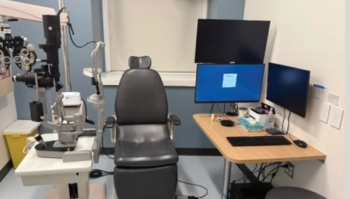
Genetic variants implicated in glaucoma
A new list of 133 genetic variants can help predict whether someone might develop primary open-angle glaucoma (POAG).
The research could lead to genetic screening that would help catch the disease before it progresses to severe vision loss.
“These results help us to better understand the previously unknown mechanisms that cause this damaging disease,” said Dr Anthony Khawaja from the NIHR Biomedical Research Centre at Moorfields Eye Hospital NHS Foundation Trust and UCL Institute of Ophthalmology in London, United Kingdom, in a press release.
“The predictive genetic markers could be measured as early as birth, even though glaucoma develops later in adulthood.”
Dr Khawaja and an international team of researchers from King’s College London, University College London and Massachusetts Eye and Ear at Harvard Medical School in the United States published the finding in
Symptomless
Although it is the leading cause of irreversible blindness worldwide, POAG causes no symptoms in its early stages. As a result, there is no adequate population screening test for glaucoma, and it is estimated that half of glaucoma cases in the community are undiagnosed.
Elevated IOP is the most important risk factor, with an estimated increased risk of 16% for every mmHg increase. Lowering IOP is the only proven therapy to slow the progression of the disease.
Heritability is estimated at 55%, the researchers reported, and genome-wide association meta-analyses have identified several loci associated with IOP and POAG, but these are limited by insufficient statistical power.
To tease out the genetic components of the disease, the researchers compared DNA and IOP of 139,555 people in the UK Biobank, EPIC-Norfolk and the previously reported combined results from 14 European studies in the International Glaucoma Genetics Consortium (IGGC).
They found genome-wide significant associations for 112 unique autosomal genomic regions, of which 68 are novel. A conditional analysis traced the origin of association signals to 133 SNP loci; when included together in a linear regression model, these SNPs collectively explain 17% of IOP variance in the EPIC-Norfolk cohort and 9% in UK Biobank.
They speculated that the difference in variance between the studies could be, in part, due to less measurement error in EPIC-Norfolk where three measurements were taken per eye compared to just one measurement per eye in UK Biobank.
“This study demonstrates the enormous power of large datasets allowing detection of these important genetic risk factors,” said co-author Dr Janey Wiggs, from Massachusetts Eye and Ear, Harvard Medical School.
Tyrosine kinase target
Several of the loci identified support an important role for angiopoietin-receptor tyrosine kinase (ANG-TEK) signalling in IOP regulation, and this could be a therapeutic target, they wrote.
They describe ANG-TEK as a key mediator of blood and lymphatic vessel development. In a gene-set enrichment analysis of their meta-analysis results, they found a suggestion of a strong role for angiogenesis in POAG.
TEK receptors are highly expressed in Schlemm’s canal endothelial cells, and disruption of ANG-TEK signalling in mice causes lack of Schlemm’s canal development, they report.
Four of the loci they identified as significant for IOP were previously associated with primary angle-closure glaucoma, suggesting that the mechanisms of the two forms of glaucoma have something in common.
Three of the IOP loci were in genes previously associated with optic disc cup area, which the researchers interpreted to mean that some portion of optic disc structural variability may be IOP mediated.
The findings could help guide health policy, said lead author Dr Pirro Hysi from King’s College London, in the press release. “Knowing someone’s genetic risk profile might allow us to predict what risk of glaucoma he or she carries, so that in the future we can focus scarce health care resources on those most at risk.”
Newsletter
Get the essential updates shaping the future of pharma manufacturing and compliance—subscribe today to Pharmaceutical Technology and never miss a breakthrough.










































